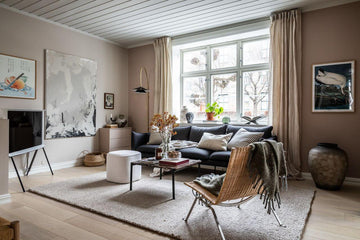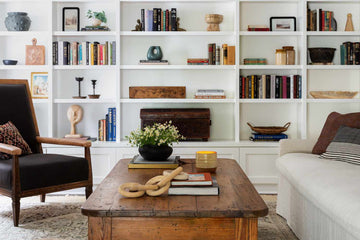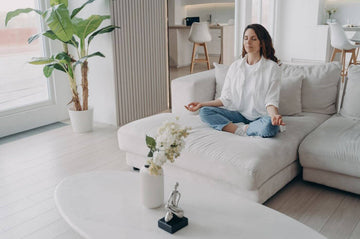Minimalist décor gets a bad rap sometimes. For some, the word conjures images of cold, impersonal spaces—think white walls, sparse furniture, and the kind of emptiness that feels more museum than home. But the truth? Minimalism doesn’t have to mean soulless. In fact, when done right, it can be deeply personal, warmly inviting, and uniquely yours.
This blog post is your gentle guide to soft styling—a way to embrace minimalism without stripping away character. Whether you’re revamping your whole home or just restyling a corner, we’ll walk you through how to create a clean, calm aesthetic that still feels full of heart.
The Quiet Power of Soft Styling
Let’s start by defining what we mean by “soft styling.” It’s a form of minimalism that’s not rigid or clinical. Instead, it focuses on a light visual footprint, intentional details, and emotional warmth. Think natural textures, gentle color palettes, curved lines, and a few carefully chosen pieces that make you smile.
This isn’t about living with less just to have less. It’s about making room for the right things—things that bring beauty, functionality, and comfort to your everyday life.

Step 1: Start with a Mood, Not a Theme
Rather than forcing your space into a trend like “Scandinavian” or “Japandi,” try asking yourself:
👉 How do I want this room to feel?
Do you want calm mornings? A cozy, tucked-in evening vibe? Light and playful energy during the day? Starting with mood as your anchor helps you make décor choices that support your lifestyle instead of just matching a look from Pinterest.
Pro Tip: Create a soft styling mood board using real-life triggers—photos, textures, favorite clothing pieces, or even scents. Let that guide your direction, not someone else's checklist.
Step 2: Pick a Soft Color Palette
In soft minimalism, the color palette does a lot of the emotional heavy lifting. Here are a few ideas to consider:
Warm Neutrals: Think oat milk, soft greys, clay, and cream. These feel cozy without being overwhelming.
Pastel Accents: A muted sage, dusty rose, or powder blue can bring life into the room without interrupting the flow.
Earth Tones: Terracotta, sand, and mushroom tones ground a space and make it feel lived-in.
Remember: you don’t need to paint everything white to be “minimalist.” In fact, a good soft neutral base lets textures and light do the talking.
Step 3: Curate, Don’t Crowd
The magic word here is curate. That means choosing items that are meaningful, versatile, and well-placed.
Ask yourself:
Does this item serve a purpose (visual or functional)?
Does it bring me joy or add to the room’s feeling?
Can it breathe in this space, or does it feel cramped?
Leave intentional blank space around your favorite items—it gives your eyes a place to rest and gives those chosen pieces more impact.
Step 4: Texture Over Clutter
Soft styling is often about how something feels as much as how it looks. Think about layering textures like:
Linen curtains that filter light just right
A chunky knit throw draped over a curved chair
Smooth ceramic trays or matte vases on a wooden table
Light-reflective surfaces like frosted glass or brushed metal
These textures create interest without adding visual clutter.
A great example? The Frosted Glass Animal Cup—it’s functional, but its soft finish, playful shape, and adorable detailing make it a subtle accent piece when left on open shelving or beside a reading nook.
Step 5: Lighting Sets the Tone
The right lighting is everything in soft styling. Avoid harsh overheads where you can and instead use ambient and task lighting to create layers.
Here’s what works beautifully:
Soft, dimmable lamps
Candles (real or faux) for a warm glow
Accent lights that double as décor
For example, a Water Ripple Ambient Light can cast gentle movement and shadows across the room, adding depth and mood without a single piece of furniture out of place. These kinds of elements bring your space to life in subtle, magical ways.
Step 6: Personalize Without Overdoing It
This is where personality enters the chat. Minimalist doesn’t mean sterile, so don’t be afraid to bring in:
A favorite art print
A framed photo in soft tones
A handwritten note on an LED message board
A favorite book with a beautiful cover on your coffee table
It’s about layering stories into your space—just enough to make it feel like you live there, not a showroom.
Step 7: Make It Scented (But Gently)
One of the most overlooked aspects of soft styling is scent. A clean aesthetic paired with a calming fragrance ties the whole experience together.
Try candles or diffusers in gentle, grounding scents like vanilla, coffee, soft florals, or amber. One customer favorite? The Iced Latte Scented Candle—a subtle, cozy scent that makes your room feel like a Sunday morning coffee date, even on a Tuesday afternoon.
Conclusion: Create a Space That Breathes with You
Minimalist décor doesn’t need to be stark or boring. In fact, when you style softly—with intention, texture, mood, and warmth—you create a space that breathes with you. A space that feels lived-in, not showroom-perfect. A space that reflects who you are in the quietest, most beautiful way.
So go ahead—clear the clutter, let in the light, and layer in the softness. Because minimalism with personality isn’t about taking away. It’s about creating more room for what matters.








